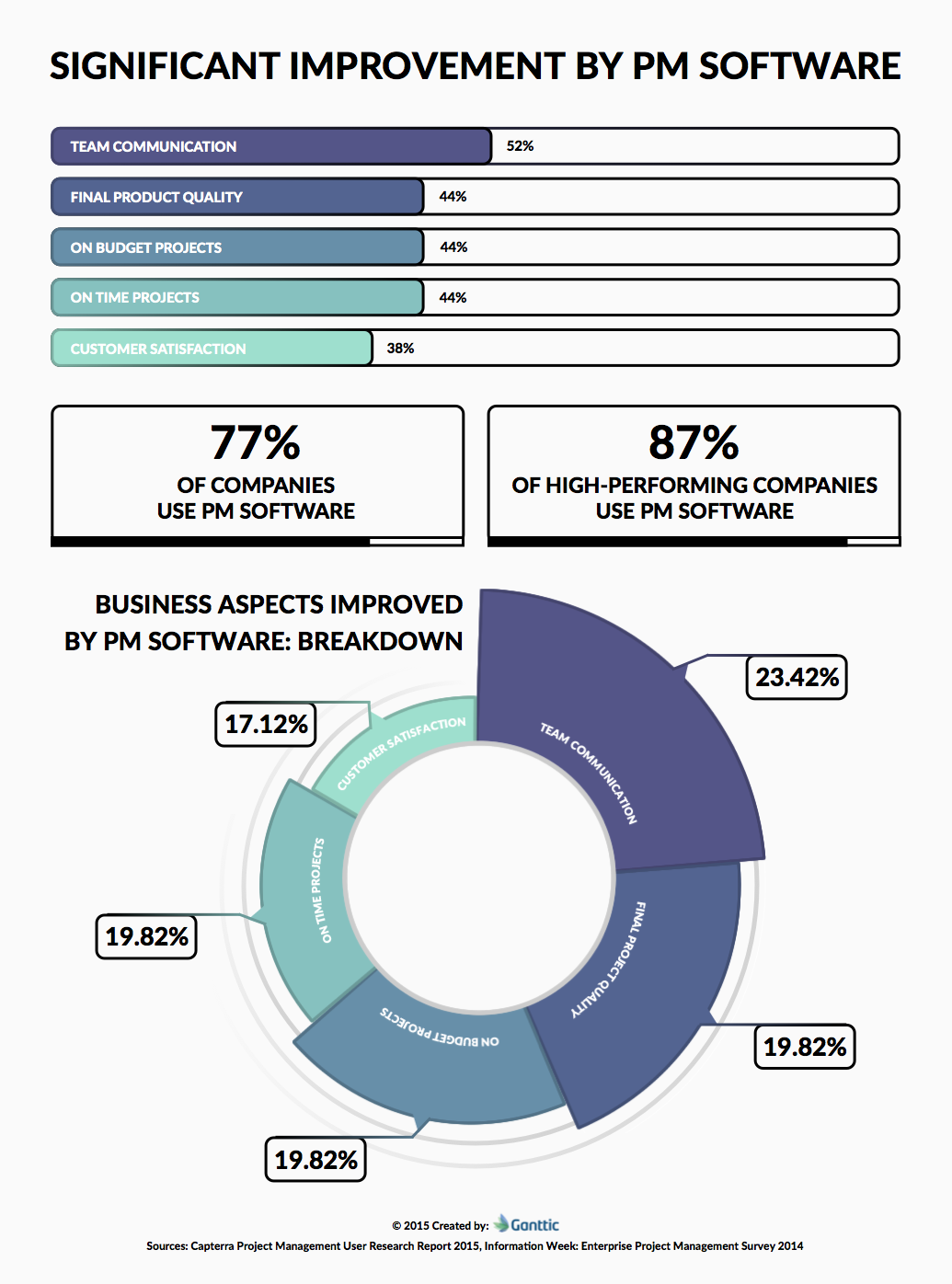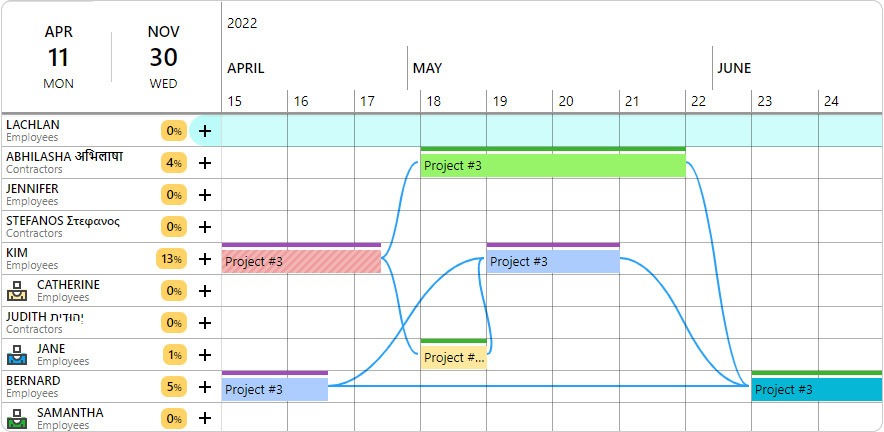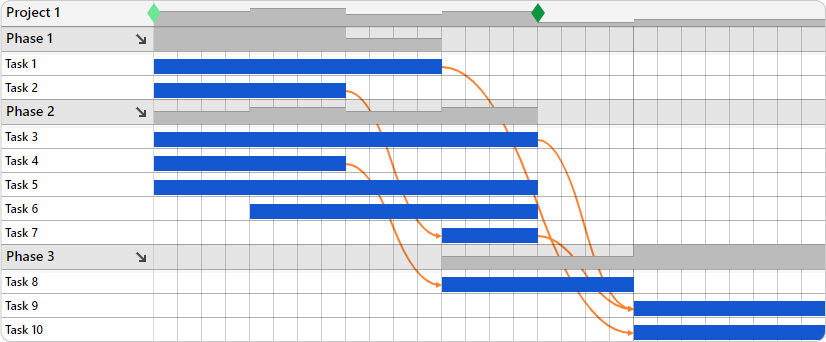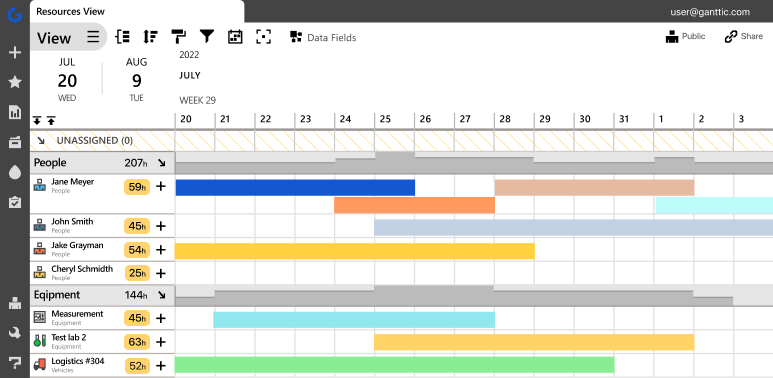Aren’t we lucky to live in a world where so many of our problems can be solved by a push of a button? Hungry? Get food delivered. Need a health check up? Book a doctor’s appointment online or use telehealth. Problems with your team’s dynamics and project workflow? Implement an online tool to help you work through the mess. Although maybe with the last one, it’s possible managers aren’t aware just how much of a help online tools for resource and project portfolio management (PPM) can be.
It’s actually, quite a lot.
And in some areas that may be surprising for even the most seasoned manager. For example, there is a direct correlation between customer satisfaction and project management. Meaning neglecting one department can have some serious effects on others.
What is Resource Management in PPM?
Resource management in project portfolio management (PPM) refers to the systematic planning, allocation, and optimization of resources across an organization’s portfolio of projects.
This involves the strategic management of various resources, including human resources, financial resources, time, and equipment, to ensure that projects are executed efficiently and successfully. As such, the process requires a comprehensive understanding of the skills and capacities of the workforce. In addition to a clear overview of project timelines, budgets, and dependencies.
The primary goals of resource management in PPM are:
- maximize the utilization of available resources
- prevent overallocation or underutilization of personnel and non-human resources
- align resource allocation with organizational priorities
- help with capacity management – ensuring that all projects have the necessary resources
Portfolio Resource Capacity Challenges
When you engage in PPM but neglect to adequately account for the portfolio’s resource pool, then there’s a risk of running into extra challenges. These obstacles can negatively impact productivity and project delivery. Here’s a few capacity challenges your organization may face.
Resource constraints
Ensuring that the right people are assigned to the right projects at the right time can be a significant challenge for any portfolio manager. But limited resources may lead to conflicts. Especially if multiple projects demand the same personnel, equipment, or funding simultaneously. This can hurt deadlines and cause you to miss some important milestones on the project schedule.
And since there’s always external factors such as market conditions, regulatory changes, or unexpected events that can pop up at any time, a solid resource management plan is necessary to combat these obstacles. Managing these constraints requires flexibility and adaptability in resource allocation strategies. So that constraints on resource availability don’t impact your projects.
Lack of skills and expertise
Matching project requirements with available skills and expertise within any organization can be difficult. It may require balancing the need for specialized knowledge with the availability of personnel possessing those skills.
When there’s skills management occurring regularly alongside a project portfolio strategy, then you’re in a better position to know what your team is able to accomplish. And assign the best person for the job. This information is also important for an HR department when the next hiring cycle occurs. As everyone will know what kind of skills sets new employees should have.
Capacity and demand planning
Accurately forecasting resource demand and availability is crucial for effective portfolio management. Without proper capacity planning, organizations may find themselves either overutilizing resources, leading to overloading employees, burnout and decreased productivity. On the other hand it can also hurt overhead if you end up underutilizing resources, resulting in wasted potential and missed opportunities.
Poor communication and collaboration
An effective communication plan is essential for PPM. Since collaboration is an inherent part of coordinating resource allocation across multiple projects and stakeholders. Lacking a communication plan, or keeping information siloed can lead to inefficiencies, duplication of efforts, and misalignment of resources with strategic goals.
Project Prioritization
When faced with limited resources, organizations must prioritize projects based on their strategic importance, potential impact, and resource requirements. However, conflicting priorities among stakeholders or unclear strategic objectives can make prioritization challenging.
What Can PPM Resource Management Software Improve?
Humans got to where we are with the help of tools. And there’s no reason to stop now.
There is a clear relationship between success and technology – namely project and resource management software. It is found that overall, 77% of companies use project management software. And 87% of high-performing companies use project management software.

Nearly every aspect of business improves with the use of project management software. As you can see from the infographic above, more than 50% of managers reported an improvement in team communication. While for the projects themselves, well they all improved as well. With 44% of managers reporting positive changes for quality, budget, and deadlines. And on the demand side, even customer satisfaction was met with a positive improvement.
The distribution of these aspects is quite even, with team communication taking up 23.42%, final product quality, the project that met budgets and project that met deadlines at 19.82%, and customer satisfaction not too far off at 17.12%.
The best part is that it doesn’t stop here, with the constant development of technology, you are looking at more and more issues being addressed by tech.
How to Improve your PPM
So you want to improve your own PPM process? Start by managing the portfolio’s resources!
Project portfolio management doesn’t actually exist without the people, machinery, vehicles, and tools to carry out the work. In other words, your projects are nothing without resources.
Planning and scheduling a project is actually only the first step of many. Because after the project is green-lit and the time period and budget is agreed upon, someone or something needs to actually do the work. And there’s no way you can be a successful project manager without actually delivering on your promise. So what is the relationship between project and resource management?
PPM only gives you one side of the picture: what are your on-going projects, what does the WBS look like, when are they meant to be completed, etc. And as a last minute add-on, you may also be made aware of who is carrying out the job.
But it’s resource management that fills in the rest of the blanks. Who’s taking over this project when a future one is set to begin, what’s the workload like for the resources doing the work, is a necessary piece of equipment available for the day the next phase begins. These may seem like minor details that don’t need to be sorted from the get-go, but that’s where you’re wrong!
More often than not, project delays occur due to a lack of resources or because a team member is tied up in other work. So ironing out all these possible delays ahead of time – will keep projects from being held up and possible loss of revenue.
There are many similarities between project portfolio management software and resource management software. Both provide an overview of your organization’s ongoing work. And most also contain similar features- such as dashboards, reports, Kanban boards, and Gantt charts.
However, with resource-centric platforms, more emphasis is placed on how your resources are doing in terms of workload, working hours, etc. There’s usually more features for optimizing utilization and capacity planning. A while projects are the goal, you’ll really be able to dive into what it is your employees are working on, and how much time they are spending in the process.
Visualizing the Difference Between Resource Management and PPM
A tangible example showing the difference between project portfolio and resource management software is with a Gantt chart. Here’s some visual example that were both created in Ganttic.
With an online resource management tool, your employees (resources) are shown on the left hand side of the chart. On each of their timelines are the visible projects and tasks that are assigned to them. Below you’ll see a version of a resource-centric Gantt chart.

Here you can see a more traditional Gantt chart for project management (also made in Ganttic). On the left is the project, its different phases and tasks. And on the chart is the taskbars demonstrating how long each task will take.

Should You Focus on Projects or Resources?
The answer is both!
While one isn’t necessarily better than the other, it all comes down to what parts of your workflow need improvement.
If you need want to focus on projects, their statuses, wrap up reports, and which ones are the best ROI for your company, then software rooted in PM methodologies and strategy are for you.
If instead you are looking to focus on the people, tools, equipment, and vehicles working on your project and how to delegate them for maximum returns, then resource management software is what you’re looking for.
The best option is to go with an online resource management tool that offers both – the ability to spot problems due to project capacity, easy allocation features, and project portfolio management capabilities.
Whatever you ultimately decide, you’ll for certain begin to notice all around improvements.
How Resource Management Software Improves your PPM
“Don’t follow trends” is only applicable in fashion. In business, the early bird catches the worm.
The purpose of technology is to provide humans with an easier, faster and cheaper way to do things. And with all the benefits that resource management can provide, it’s foolish to not give it a second look. Plus, now that the abundance of software is so much more developed, there are so many problematic areas which even a free tool can easily solve:
Easy Resource Allocation
Gone are the days where spreadsheets were the go-to for every need. Spreadsheets are made for a wide array of purposes, it might solve some problems, but on the whole, it makes resource allocation complicated.
Now, there are specific cloud platforms for needs such as resource scheduling and reallocation. Through the use of features such as drag and drop, you can easily move tasks from one resource to another. Or if it looks like the job will take longer than expected, simply pick it up and move some extra team members to the task. All of this is makes for a quick and intuitive, hassle-free way to schedule.
For easy resource allocation planning, project management software with ppm and resource management features is a definite improvement.
Prevents Overbooking Resources
Having your project and team plans all under one umbrella reduces time cross-checking capacity and availability. That’s why it’s so important to not only monitor projects but their resources as well. Which is where visual planning and the overview it provides comes in.
Plus, since online resource management tools all occur in real time, it’s simple to communicate changes with other managers as it’s happening. That’s because everyone can see the changes as they are being made. Which reduces any chance that resources get “stolen” to work on other projects and overbooking them in the process. Such tools also often allow you to communicate in-app, so that you can keep track of changes made to plans and communicate with your team in the same platform.
Having an over of the project management resource pool in ppm benefits everyone. Because when employees, or even stakeholders or clients, take a peek at what’s to come, you can be assured that they are ALL getting the correct information.
Limits Time Spent Planning
With an online PPM resource management tool, you can expect to cut your planning time in half. Not only because you’ll be able to hurry up the process, but also because you’ll only need to do it once. Projects are actually scheduled along with their assigned resources. Meaning that nothing is a guess, and what you see reflected in the software is a fair representation of what your teams can take on.
Another factor with online tools, is you don’t have to worry about missing out on updates. The developers behind cloud-based resource planners make sure that the software works as it should. Updates are taken care of by these developers as well so you don’t have to do the whole restart-your-computer routine after every update.
Lessens Expenses on ERP Solutions
ERP software is great, but it comes with a hefty price tag, putting it out of price-range for many SMBs. Cloud resource planning tools are transparent with their prices, simple to purchase and require low team implementation time. For the price that you are paying for a resource management tool, you are getting a worry-free experience scheduling your team and managing your human and non-human resources using an almost custom-made Gantt chart, Google Calendar and more.
For the communication, ease-of-use, integrations, and accessibilities, online tools help you not only take better care of your business, but also better care of your employees. All with a price tag that any sized business can afford.
Better Capacity Management
By integrating a robust capacity management tool into PPM, organizations can effectively allocate and optimize resources. Ensuring that each project receives the right amount of manpower, time, and expertise.
This approach enables teams to balance workloads, prevent resource bottlenecks, and prioritize tasks based on available capacity. As a result, projects are executed more smoothly and tasks meet their deadlines more reliably. Plus teams can proactively address potential issues before they escalate.
The real-time visibility provided by the capacity management tool allows for informed decision-making, helping stakeholders identify potential risks and allocate resources strategically.
Improves Skills Management
With a resource management PPM system, businesses can create a comprehensive skills inventory for their whole organization. This allows them to systematically identify the skills and expertise required for each project within the portfolio.
By mapping the capabilities of their workforce, teams can strategically assign resources based on their specific skills. Ensuring that each project benefits from the right expertise. Most PPM software facilitates the tracking of skill development and proficiency levels. Allowing organizations to identify skill gaps and invest in targeted training programs.
Try PPM Resource Management Software Today

Hopefully this article has shown you the true benefits of cloud-based resource management tools. As a link between projects and resources – you’ll finally be able to get work delivered on time, with less stress, hassle, and delays holding you back. If you’re looking to abandon your obsolete software, give Ganttic a try. Fully utilize Ganttic’s features made simple for advanced users. Sign up here for a free trial.